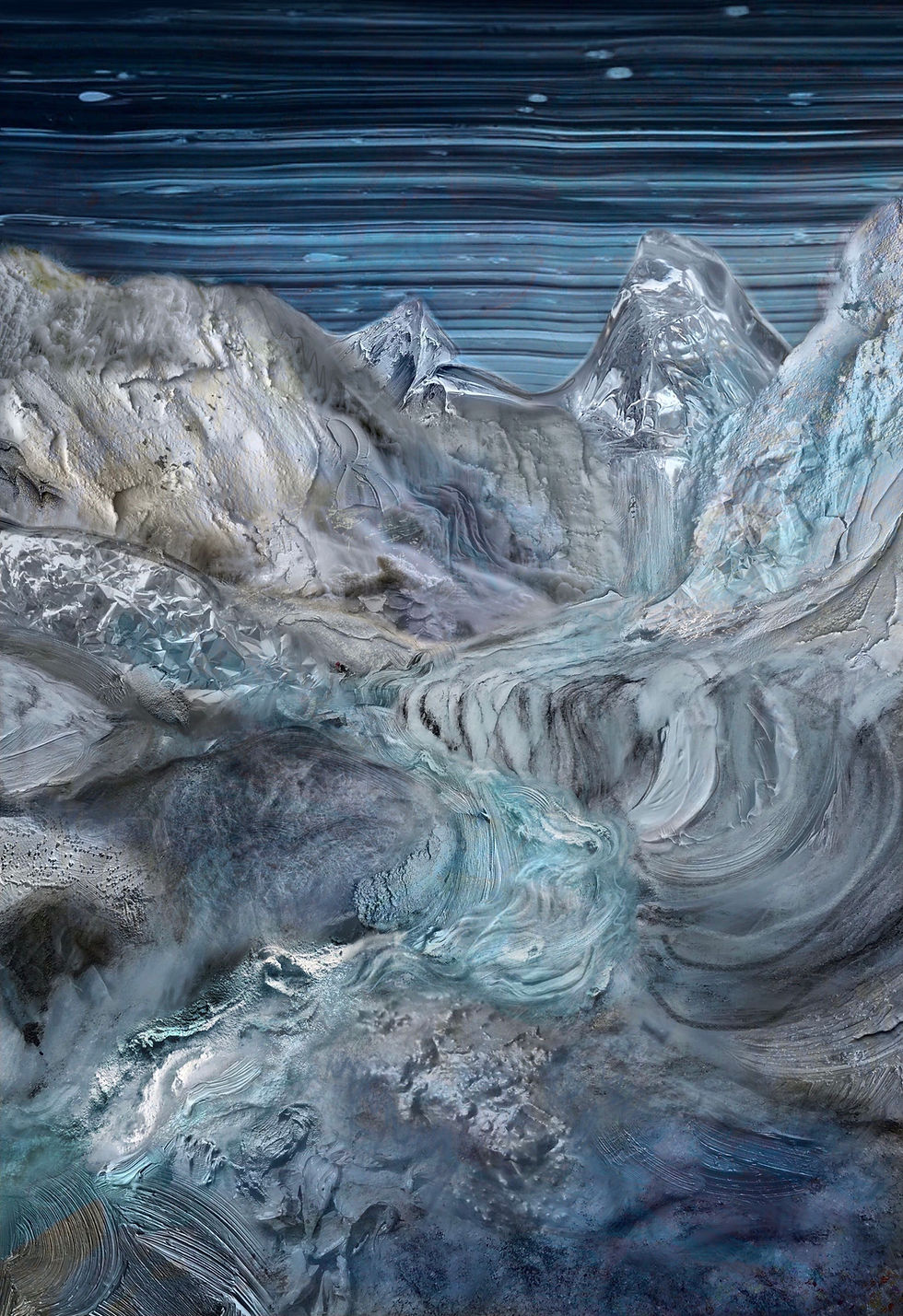Patrice Lambeau
- Anna Lilli Garai
- May 27
- 2 min read
Patrice Lambeau builds his images digitally, but they never feel flat. He works by hand on an iPad, cutting, shifting, and layering until something clicks. Once printed, the surface gets treated and sealed, giving each piece a sense of depth and presence. His process is slow, focused more on feel than planning. Figures often repeat, blur, or fall apart. The mood is quiet, sometimes uneasy, but never forced. He leans into fragments—faces, gestures, small distortions. There’s a softness to the compositions, but also tension in the way elements float or fall apart. Even when things seem calm, there’s always something slightly off. That subtle imbalance is where the work finds its rhythm.

Q: What pushed you to shift from music to digital collage—and what stayed the same between the two?
A: The end of the band. Though I kept creating music by myself after the split for quite some time, I missed the social experience of the band. So more and more, I found fresh excitement in making visual art. Creativity doesn't seem to mind through which outlet it flows. When, in his final years, Henri Matisse was unable to paint, he turned to paper cutouts.

Q: You often create between sleep and waking. How does that state shape what you make?
A: I like the combination of a fresh, reset mind and a slightly sleepy state, in undisturbed silence between sleep periods. The mental state at these times is uninfluenced by any events or moods of the day.
Q: Loneliness is a recurring theme in your work. What keeps you returning to it?
A: Life experience itself, I guess. When I was six, my father left us without saying goodbye. Five years ago, after I told my teenage son about the arrival of a half-sister, he refused to see me ever since. I haven't seen my son for five years. I miss him a lot and think of him every day. So somehow, for nearly half a century, I am basically still just this little boy making drawings to cope with traumatized loss.

Q: Your layering technique adds serious depth. How do you know when to stop?
A: Over the last years I probably produced more than 500 pictures. By now, a pretty reliable result can be achieved through experience in craft and material. Pictures larger than size A3 are produced with at least two epoxy resin layers.

Q: Do glitches or imperfections ever lead the work somewhere new?
A: Absolutely. I always try to welcome glitches as an additional creative possibility, which—after evaluation—either gets considered in the process or rejected.
Q: "Glacier, Close to Midnight" feels like a turning point. What changed for you after making it?
A: It was completely created during a few hours’ train ride. Without any concept of where it should go, the picture somehow created itself and its urgent topic. Moments like these nurture confidence in spontaneous creativity.


